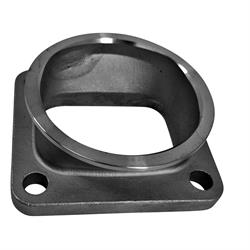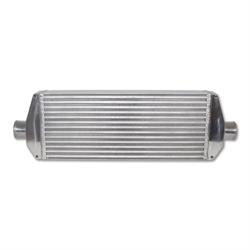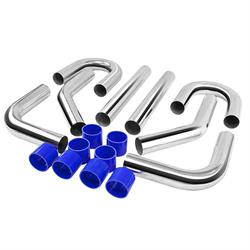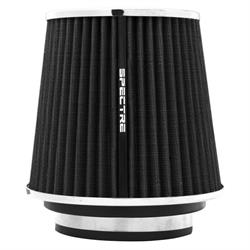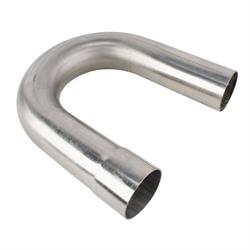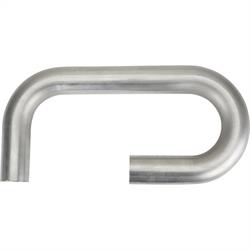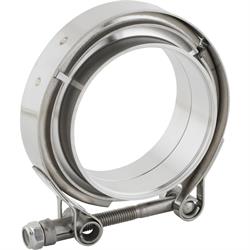Turbo vs Supercharger | The Best Way to Boost Your LS Build
Boosted LS Build Breakdown | Turbo LS Build VS Supercharged LS Engine
There are many ways to make power with an engine such as the LS family of GM V8s. No matter the displacement, or even the brand, at the end of the day we must remember that engines are essentially air pumps. The more air we can get into the cylinders (along with the matching fuel amount for the best air/fuel ratio) the more power that can be made. This is called volumetric efficiency, or VE for short. This is why higher lift cams, cylinder head porting, and other ways of increasing air flow help make power. But the typical V8 engine can only be so efficient in a naturally aspirated state; usually in the range of 75-95 percent depending upon modifications. It is rare for a street engine to achieve 100 percent VE (meaning a 5.3 LS ingests a total of 5.3 liters of air from all eight intake strokes of the pistons). However, there are cases of N/A engines exceeding 100 percent VE, though these are race spec engines with injector stacks or other modifications and the VE is in a narrow rpm band.
To exceed 100 percent VE on a street engine the most effective option is by adding boost. Boosting your LS engine, whether it be via a turbocharger or supercharger, will easily surpass 100 percent VE because you are mechanically forcing more air into the cylinder than what would otherwise be drawn in naturally by the engine’s reciprocating assembly. This “cramming” of the cylinder with additional air pressure provided by the turbo or supercharger (AKA “blower”) is how additional power is made when the proper amount of additional fuel is supplied along with it using proper tuning of the system. This is why many OEM applications now use turbocharging or supercharging in their engines to provide a wide power band with additional horsepower and torque, without the detrimental side effects of things like a “lumpy” cam, additional displacement, or other options to increase horsepower. These OEM turbo and supercharger applications are extremely prevalent today, as they are efficient, yet provide great power and torque rivaling larger engines. Let’s look at these two main boost options and their pros and cons: superchargers vs turbochargers for your LS-powered build.
Turbocharging
Turbochargers use exhaust gasses from the engine to spin a turbine, which is connected to a compressor wheel via a common shaft. The compressor wheel forces additional air into the engine, increasing the engine’s power level. Most systems are of a single turbo design, but twin turbo builds are gaining in popularity for their symmetrical under hood appearance and additional power making abilities.
Pros
- Very efficient, as they use the spent exhaust gasses from the engine to turn the compressor vs a belt or chain driven from the engine’s crankshaft.
- Highly customizable in nature, the turbo(s) can be sized for the power level desired, and the turbo(s) can be mounted in multiple locations with the hot and cold sides plumbed as needed to reach the engine.
Cons
- Turbocharging is often more complex than just bolting a supercharger on. Turbocharging requires boost control devices to prevent engine damage and intercoolers to cool the compressed air charge.
- Turbo setups are often a victim of space constraints under the hood, providing challenging installation for all the turbo system components, plumbing, and more.
- Turbo boost lag can be a tough issue to solve, as often there is only room for the turbo to be placed in a certain location under hood. This lag, which is a delay between throttle input and power output, can be frustrating to chase down.
Supercharging
Superchargers use the engine’s crankshaft/accessory drive to turn the supercharger’s input shaft, producing near instantaneous boost pressure with no lag. There are many types of superchargers, including traditional Roots units, as well as twin screw, and centrifugal models available, often in application specific kits. Due to the belt driven nature superchargers do rob the host source (your engine) of some of its power output. Generally, this is overlooked, as the output of the supercharger more than makes up for it. That said, it is something to consider, as the more boost is made the more horsepower it will take to spin the supercharger.
Pros
- Instant boost when the throttle is commanded. There is little to no lag with supercharger systems.
- Installation is often much simpler, as many supercharger manufacturers offer complete vehicle specific applications with everything needed for a bolt on solution.
- Additional boost is often available simply by changing the supercharger pulley.
Cons
- Not as efficient as a turbocharger since the system is driven via a belt off the engine, which is taking horsepower from the engine.
- Due to the way most superchargers are sold as vehicle specific kits, superchargers are often a more expensive solution to boost than going the route of a turbo.
- While turbos must deal with heat on the turbine side, superchargers overall generate more heat and often require additional engine cooling and air-to-air or air-to-water charge cooling.
Best LS Engine for Boost
There are numerous Chevy LS motors available in both new and used applications for your turbo LS engine build needs. Some are going to be better at handling boost than others. You’ll have to determine the best LS engine for boost based on your budget, power needs, and build plan. Sure, you can buy a greasy Gen III 4.8 LS engine with 250,000 miles on it for a couple of hundred bucks and slap a turbo to it, but there are better options if you’re willing to do a little research and spend a little more on your LS engine. Obviously, a max effort build using the best of the best is going to be for deep pockets, but we know between these two options there will no doubt be a suitable LS engine that fits your needs. Look at our 5.3 LS engine build lists and 6.0 LS build lists, both of which have turbo and supercharger-based build plans listed, for some ideas. But first you need to know what LS to look for. Be sure to review our LS engines list ID guide here in the Toolbox, which will help you to understand all the critical spec of the LS you’re looking at and if it is right for your build needs. Meanwhile, let’s review the various LS engine offerings below with some important pros and cons of each.
Gen III LS Engines (2001-2007):
Pros:
- The Gen III version of the LS, including the LS1 and LS6, has a robust stock bottom end that can handle moderate to high levels of boost without issue.
- Gen III LS engines are, on average, less expensive than newer generations, making them a cost-effective choice for many builders.
- You can enjoy a large aftermarket that supports the Gen III LS with all manner of performance and durability parts that support adding boost.
Cons:
- Compared to the newer Gen IV LS engines, the Gen III LS lacks some of the advanced features and improvements found in newer engines.
- Gen III LS engines often have higher mileage and wear, which could impact their performance and longevity in boosted applications without spending additional time and money to fully rebuild the engine.
Gen IV LS Engines (2008-2013):
Pros:
- Gen IV LS engines, such as the LS3 and L92, feature improved technology, including better cylinder heads and more efficient intake manifolds.
- These engines offer higher stock power ratings and better efficiency, making them ideal for adding boost.
- The Gen IV LS engines have strengthened components, which can handle higher boost levels with fewer modifications, making them solid options for LS swaps using a turbo or supercharger.
Cons:
- The Gen IV LS engines are generally more expensive than Gen III LS engines, both in terms of initial purchase and potential aftermarket parts.
- Some parts from Gen III LS engines may not be compatible with Gen IV LS engines, requiring additional modifications and budget expenditures.
LS7 Engines (2006-2015):
Pros:
- With its 7.0-liter displacement and high-performance components, the LS7 provides a solid foundation for adding boost via a turbo or supercharger.
- Built with high-strength materials and components, the LS7 is capable of handling substantial power increases without major internal modifications.
Cons:
- The LS7 is one of the most expensive LS engines to use in an LS swap, both in terms of initial sourcing cost and maintenance.
- Requiring specific tuning and components that can increase the overall complexity and cost of the build, the LS7 is far from a “basic” LS V8.
LSX Engines (Aftermarket Crate Engines):
Pros:
- LSX engines are designed to handle extreme levels of boost and power thanks to their reinforced blocks and stronger internals used in assembly.
- They offer a high degree of flexibility for serious performance builds, including racing applications.
Cons:
- LSX crate engines are significantly more expensive than a production take-out engine from a salvage yard and will require budget adjustments for both the engine and supporting components.
- Much like the LS7, the LSX series of crate engines often require specialized parts and tuning, which can add complexity and additional cost to the build.
Turbo LS Build Cost, Power, Complexity
Turbocharging your LS will provide a substantial increase in horsepower and torque output, however there are many factors to consider, including overall cost and the typical complexity of building a turbo setup for your blown LS engine. While not insurmountable to overcome, these build costs, and issues such as packaging, heat management, and more, must all be considered to provide a clear path to upgrading your LS swap with a single turbocharger or possibly even twin turbos, which further adds to the cost and complexity factor, especially if you’re going to need a stronger LS transmission to harness the power. Below we’ll review the pros and cons of using a turbo on your LS engine, as well as other considerations like packaging, exhaust, and more, along with the all-important question of “Should I do a single turbo or twin turbos?”
Pros:
- High Power Potential: Turbocharging can provide substantial increases in horsepower and torque. By forcing more air into the engine, turbos can deliver significantly higher power levels compared to naturally aspirated setups.
- Efficiency Gains: Turbos utilize exhaust gases that would otherwise be wasted, improving overall engine efficiency and allowing for higher power output without a proportional increase in engine size.
- Customizability: Turbo systems are highly tunable. You can adjust boost levels, select different turbo sizes, and tweak other components to achieve your desired power output and performance characteristics.
Cons:
- Cost: Turbo builds can be expensive. Costs include the turbocharger itself, intercooler, wastegate, boost controllers, and potentially other supporting modifications such as stronger internals or upgraded fuel systems. Additionally, installation and tuning can further increase costs.
- Complexity: Turbo systems add complexity to the engine setup. This includes installing the turbocharger, intercooler, piping, and boost control systems. The setup often requires custom fabrication and tuning, which can be time-consuming and technically demanding.
- Space Constraints: Turbochargers and their associated components can be bulky, potentially requiring significant modifications to the engine bay. Proper placement of the turbo, intercooler, and piping is crucial and may limit space for other components.
Key Considerations:
- Engine Bay Space: Ensure there is enough room for the turbocharger, intercooler, and necessary piping. Space constraints may require custom mounting solutions or modifications to the engine bay.
- Boost Control: Effective boost control is essential to manage power levels and ensure engine reliability. This includes using quality wastegates and boost controllers to regulate and monitor boost pressure.
- Intercooler: An intercooler is crucial for reducing the temperature of the compressed air from the turbo, which helps improve engine efficiency and prevents knock. Properly sizing and placing the intercooler is important for maintaining performance.
- Specialty Headers: Turbo builds often require specialty turbo LS headers designed to route exhaust gases to the turbocharger. These turbo LS headers can be custom-made, purchased separately, or as part of a LS turbo kit.
Twin Turbo LS vs Single Turbo LS
OK, how many of you skipped right to this section? It’s OK, we understand. “Twin turbos” just rolls off the tongue when bench racing and who wouldn’t want to say their ride has a twin turbo LS engine under the hood? However, as we’ve already stated, there is quite a bit of work to get a big turbo LS system set up properly and adding a second turbo to the mix doesn’t make things easier. See our companion Toolbox piece on turbocharging an LS engine for an in-depth look at the decision process of whether you should run a single or twin turbos on your LS swap. Though, for this comparison guide, we’ll undertake a high level overview of single vs twin turbos and the advantages and disadvantages of each performance path.
Single Turbo LS Option
Believe it or not, a single turbo LS engine can achieve upwards of 1,000 horsepower when sized appropriately. A smaller turbo, which is easier to package, can net you a horsepower gain in the 400-500 range, but yes, a single turbo can get you to four-digit horsepower numbers. Obviously, a single turbo setup has simplicity going for it, as it is easier to package and only requires one wastegate, one mounting flange, a single in/out intercooler, and less hot side plumbing. The cost is also going to be less than a twin turbo setup, perfect for those looking to build a budget turbo LS setup. When sized appropriately you can still achieve a broad powerband, though single LS turbo setup is more susceptible to boost lag, especially big single turbos. Finally, with a single turbo system it is much easier to manage the heat generated as well since you only have one turbo in the engine bay versus two, taking up more room that stifles airflow through the engine compartment.
Twin Turbo LS Option
Going the twin turbo route on your LS engine swap can give you a range of horsepower from 500 to well over 1,500 depending on turbo sizing. Often it is suggested that it is better to run two smaller turbos rather than one larger turbo. This virtually eliminates the turbo lag that often accompanies large single turbo setups. Twins will provide quicker throttle response and can allow for more balanced power delivery via boost pressure tuning. While it may seem the opposite, two smaller turbos will usually generate less heat than one larger turbo, allowing for easier thermal management under the hood in many cases. On the flip side, twin turbo builds are more complicated because there are literally two of everything. Two hot sides, two cold sides, two wastegates, and sometimes even two intercoolers (packaging may dictate two smaller intercoolers versus one larger intercooler with dual inlets). Obviously, with two of everything the costs almost double for a twin turbo setup, and there will be additional tuning and custom fabrication involved versus a single turbo install.
5.3 LS Turbo Kit
Just to provide some real world comparison here we’ve put together a typical 5.3 LS single turbo build list to compare to one of the more popular selling LS swap supercharger systems Speedway Motors offers, the Roots based Edelbrock E-Force supercharger system. While there are several direct fit applications, we’re using Edelbrock’s universal 2014-2018 5.3 LS E-Force supercharger kit to compare with here as the closest “apples to apples” power adder.
The first thing everyone is going to notice here is the price differential. But don’t let that fool you. While the Edelbrock E-Force supercharger is a weekend bolt-on project for most, the best LS turbo kit will still require a huge amount of fabrication (tubing cutting and welding, positioning of components, and often engine bay modifications). So, while the 5.3 LS turbo kit is a much cheaper option up front, you will pay handsomely for the fabrication work if you don’t have the skills to do it yourself. This is where, at a typical shop labor rate, the LS turbo kit may end up costing you about the same amount, though one good thing is you can spend your turbo money a little at a time buying the parts piecemeal, whereas the supercharger kits are an all at once proposition. As we’ve added throughout this piece, let’s delve a little more into the pros and cons between the typical single turbo kit like in our build list and the E-Force supercharger listed.
Single Turbo Kit for 5.3 LS:
Pros:
- High Power Potential: Turbo kits can provide significant horsepower gains, often exceeding what a supercharger can deliver.
- Customizable: Allows for a high degree of customization in terms of boost levels and power delivery.
- Efficiency: Utilizes exhaust gases for boosting, which can be more efficient in certain setups compared to supercharging.
Cons:
- Complexity: Installation and tuning are more complex, requiring custom fabrication and detailed adjustments.
- Cost: While components can be cost-effective individually, the total cost can add up with custom fabrication and installation. The LS turbo kit we have in our build list with intercooler and piping kit is under $2,200.
- Space Constraints: Turbo kits often require more space and custom modifications to fit within the engine bay.
Horsepower Gain:
- A turbo LS kit can offer a wide range of horsepower gains depending on the turbo size, boost levels, and overall setup. Typically, LS turbo kits can increase horsepower by 50% to 100% or more over the stock engine output. For instance, a stock engine producing 400 horsepower could see gains of 600 to 800 horsepower or higher with an appropriately sized and tuned LS turbo kit.
Edelbrock E-Force Supercharger for 5.3 LS:
Pros:
- Immediate Power: Roots-style design provides instant boost with no lag, delivering power across the rpm range.
- Ease of Installation: Designed for factory fitment with minimal modifications, simplifying installation.
- Integrated Design: Includes everything needed for installation, maintaining a clean, factory-like appearance.
- Durability: High-quality construction and materials ensure long-term reliability and performance.
- Warranty: Comes with a warranty, offering peace of mind and support.
Cons:
- Cost: Generally more expensive upfront compared to LS turbo kits. These 5.3 LS supercharger kits start at about $7,000 and go up from there depending on power level desired and components included.
- Efficiency: Draws power directly from the engine, which can reduce overall fuel efficiency and net power gains.
- Heat Generation: Can generate significant heat, potentially requiring additional cooling solutions.
Horsepower Gain:
- The Edelbrock E-Force LS 5.3 Supercharger typically provides power gains of around 30% to 50% over the stock engine output. For example, if the stock engine produces 400 horsepower, the supercharger could boost it to between 520 and 600 horsepower, depending on the specific application and tuning.
Are Superchargers Worth It? | Blown LS Engine Build
So, we already know that a supercharger is often going to be more money up front, as there’s no such thing as a cheap LS supercharger kit, but are they still worth the hit to your bank account? For many the supercharger option may be the perfect answer. For those looking for instant on throttle power that can be installed easily on a weekend and may even provide a classic period look, the supercharger will win that argument 10 times out of 10. The turbo system, on the other hand, will easily surpass the supercharger’s horsepower output, can be purchased in stages, and overall costs less from a pure hardware standpoint. If you can handle the fabrication work involved a turbo system can easily slide to the top of your wish list. However, if you need to farm out fabrication, installation, and tuning to a reputable shop, costs will become more in line with the supercharger option.
Decision Factors in Building an LS With a Turbo vs Supercharger:
Cost:
- Supercharger: Higher upfront cost, but fewer hidden expenses. Designed for easy installation.
- Turbo: Lower initial cost, but expenses can add up with custom work and tuning.
Complexity:
- Supercharger: Easier to install, plug-and-play for many applications. Lower maintenance.
- Turbo: More complex to install, requiring custom fabrication and regular maintenance.
Sound:
- Supercharger: Produces a distinctive whine, adding to the performance feel.
- Turbo: Known for the "whoosh" and blow-off valve hiss. Can quiet/soften the exhaust note.
Cool Factor:
- Supercharger: Classic muscle car looks and immediate power. Strong street cred.
- Turbo: Modern, aggressive appearance. Favored in tuning and motorsport scenes.
Packaging/Look:
- Supercharger: Neat, factory-like fitment with a clean engine bay appearance.
- Turbo: Requires more space and may look more cluttered but can be visually impressive.
Performance:
- Supercharger: Delivers instant power with no lag. Reliable for daily driving.
- Turbo: Offers higher peak power but with some lag. Adjustable boost for tuning flexibility.
Stock LS Supercharger | LS9 and LSA Superchargers
The LS engine was indeed blessed with a factory supercharger option on a select few performance GM models, notably the Corvette and the Camaro, just to name two. These Gen IV LS engines, the LS9 and LSA, and later it’s Gen V LT4 supercharged replacement, all used an Eaton TVS Roots-type supercharger mounted on top between the cylinder heads via a cast intake system that features an integral liquid cooled heat exchanger system. Currently the LT4 supercharged LS engine is available as a new crate engine from GM Performance Parts, but you might be able to score an LS9 or LSA engine from select salvage parts businesses that cater to GM performance vehicles or even your favorite salvage yard if you’re lucky! These are not budget LS supercharger options, but you will get major cool points when the hood goes up at a cruise in for using that OEM supercharged LS engine swap.
Supercharged LS9 Engine:
- Engine Overview: The LS9 is a 6.2-liter supercharged V8 engine that was specifically designed for the Chevrolet Corvette ZR1, produced from 2009 to 2013. It is the most powerful engine ever produced by GM at the time, delivering 638 horsepower and 604 lb-ft of torque.
- Supercharger Details: The LS9 features a 2.3-liter Eaton TVS R2300 Roots-style supercharger. This unit provides excellent boost response, with integrated charge cooling to maintain high performance while preventing heat soak.
Supercharged LSA Engine:
- Engine Overview: The LSA is another 6.2-liter supercharged V8, debuting in the Cadillac CTS-V (2009-2015) and then added to the Chevrolet Camaro ZL1 (2012-2015). It is a more accessible and slightly less powerful version of the LS9, delivering 556HP/551TQ in the Cadillac fitment and 580HP/556TQ in the Camaro offering.
- Supercharger Details: The LSA utilizes a 1.9-liter Eaton TVS R1900 Roots-style supercharger. While smaller than the Eaton model used on the LS9, it still provides robust performance with smooth power delivery and strong mid-range torque.
Best LS Supercharger
While we’ve focused on the Roots-style supercharger design, such as the Edelbrock E-Force 5.3 LS supercharger unit mentioned earlier, the Roots-style blower is not the only supercharger for LS engines design out there. So, what is the best LS engine supercharger kit design to use? Like any question there are multiple “sub questions” that will lead you to the right answer. Let’s go over the various supercharger designs available today to create the blown LS engine of your dreams with the basics of how they work and create boost and what their pros and cons may be for boosting your LS with supercharger kits.
Centrifugal Superchargers:
- How They Work: Centrifugal superchargers are based on dynamic compression and operate similarly to a turbocharger, using an impeller to compress air. They typically mount to the front of the engine and are driven by the engine's crankshaft via a drive belt.
- Pros: These superchargers are known for their efficiency at high RPMs, providing a smooth and linear power curve. They are often more compact, allowing for easier installation and less impact on engine bay space.
- Cons: Centrifugal superchargers tend to provide less low-end torque compared to roots-style units, making them less ideal for applications where immediate power is needed, as the centrifugal is designed for a narrower rpm range and speed.
LS Centrifugal supercharger brands include Vortech, TorqStorm, ProCharger, and Rotrex.
Roots-Style Superchargers:
- How They Work: Roots-style superchargers are known as positive displacement blowers (delivering a fixed volume of air per revolution of the supercharger) and sit on top of the engine, forcing air directly into the intake manifold. They are often associated with the classic muscle car look, thanks to their prominent placement and early designs that often required a hole cut in the hood for clearance.
- Pros: These superchargers deliver instant power with zero lag, making them ideal for street applications where quick throttle response is crucial. The modern roots-style design also maintains a low profile, allowing for better fitment under the hood and a cleaner engine bay appearance.
- Cons: They can generate more heat and have a lower efficiency at higher RPMs compared to centrifugal superchargers.
Roots-style supercharger brands include Edelbrock’s E-Force product line and Magnuson Products.
Twin Screw Superchargers
- How They Work: Twin Screw-style superchargers are similar to the Roots blowers and are also positive displacement blowers that sit on top of the engine, forcing air directly into the intake manifold.
- Pros: These superchargers deliver instant power with zero lag, making them ideal for street applications where quick throttle response is crucial. The Twin Screw-style design also maintains a low profile like the Roots unit, allowing for better fitment under the hood. The Twin Screw, when compared to a Roots of the same size will generate less heat.
- Cons: While more efficient than the Roots supercharger, nearing the centrifugal’s efficiency numbers, the Twin Screw works through a narrower rpm range and is often designed for specific applications (boost, rpm, and load) to achieve that efficiency. The more complex rotor design of the Twin Screw usually means a higher entry cost for the kit as well.
Twin Screw-style supercharger brands include Kenne Bell, and Whipple Superchargers.
Speedway Motors currently offers the Edelbrock E-Force and Magnuson lines of Roots-style superchargers. Below we’ll bullet point a few of the kit features for both brands.
Edelbrock E-Force Superchargers:
- The E-Force is designed with a low profile, allowing it to fit under the hood of most vehicles without requiring modifications. This OEM-style design ensures a clean and professional appearance.
- The E-Force works seamlessly with factory fuel injection systems, making it an easy upgrade for those looking to enhance their street performance without overhauling their engine’s setup.
- This supercharger is great for street applications, providing reliable power with just the right amount of boost for everyday driving. It’s designed to offer consistent performance without sacrificing driveability.
- Edelbrock also backs the E-Force Supercharger with a warranty, adding peace of mind to your purchase. This is particularly appealing for those who want to enhance their engine's performance without the risk typically associated with aftermarket upgrades.
- Magnuson superchargers are designed to integrate seamlessly with most vehicles, requiring no hood modifications for installation.
- Offering instant throttle response and torque, these units are ideal for both daily driving and track use, providing reliable power without sacrificing driveability.
- Magnuson’s superchargers are engineered to produce less heat, improving efficiency and durability at a range of RPMs.
- Backed by a warranty, Magnuson gives you confidence in the performance and longevity of your supercharger upgrade, adding extra peace of mind.
LS Turbo vs Supercharger LS
So, let’s review our LS turbo vs supercharger thoughts for your LS swap build. As discussed above, turbochargers offer substantial horsepower gains at a lower price point for the hardware, but installation can be quite involved with a complex installation that requires fabrication, turbo system knowledge, and additional tuning. Furthermore, their installation may not be as clean as the typical supercharger system, cluttering the engine bay with hot and cold side charge piping, as well as the turbo itself. On the other side of the argument, we have supercharging. Superchargers provide near instant boost response and are easier to install, however their cost of entry is higher than going with a turbo and they often generate more heat. This is offset however by the fact that most supercharger kits are a bolt-on solution that you can do yourself in a weekend. Superchargers also provide a much cleaner engine bay appearance, especially Roots and Twin Screw models that mount in place of the intake manifold on top of the engine. As a result of these talking points it is easy to see that an LS turbo vs supercharger discussion is one not to be taken lightly.
Turbocharger:
Best for maximum power and flexibility. Ideal for applications where high peak power is desired, such as racing or high-performance builds.
Advantages:
- High Peak Power: Provides substantial horsepower gains and can be tuned for remarkably high performance.
- Boost Flexibility: Adjustable boost levels allow for customization based on performance needs.
- Efficiency: Can be more efficient at high RPMs compared to roots-style superchargers.
Challenges:
- Complex Installation: Requires custom fabrication and tuning.
- Lag: May have some lag before the turbo spools up.
- Space: Can require more space and result in a more cluttered engine bay.
Sound: Produces a distinctive "whoosh" and blow-off valve hiss.
Cool Factor: Modern and aggressive appearance.
Packaging/Overall Look: Can be bulky and cluttered in the engine bay.
Supercharger:
Best for instant power and ease of installation. Ideal for street applications where quick throttle response and simplicity are important.
Advantages:
- Instant Power: Delivers power immediately with no lag, making it great for street driving.
- Simplicity: Easier to install with fewer custom requirements. Generally, it is more straightforward to integrate with existing setups.
- Consistent Performance: Provides a more predictable power curve.
Challenges:
- Cost: Can be more expensive upfront compared to some turbo setups.
- Heat: May generate more heat and be less efficient at extremely high RPMs.
Sound: Creates a noticeable whine, adding to the performance feel.
Cool Factor: Classic muscle car look, strong street cred.
Packaging/Overall Look: Neat, factory-like fitment with a clean engine bay appearance.
Technical content assistance provided by Jerad Flemming





